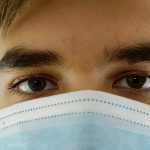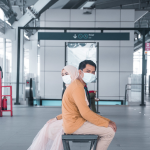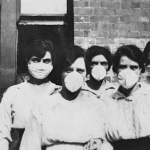Hospital data show that the largest shares of COVID infections and deaths have been to the unvaccinated, about whom we have little personal information. The media has interviewed a few individuals, but large-scale demographic data are needed for a better understanding. A new report from the Centers for Disease Control and Prevention (CDC) may provide some insight.
vaccinations
New COVID-19 cases (infections) and deaths began a steep decline in January, followed by fewer deaths a few weeks later, resulting in lower case-fatality rates. Vaccination rates began to increase during this period, but not everywhere nor for everyone. Did these public health benefits result from increased vaccination rates?
Much of the concern regarding CDC guidelines for COVID-19 involves the perception that, at times, they are contradictory. And these perceived flip-flops can be used as political fodder. While some mix-messaging is due to our changing understanding of the deadly virus, it may often stem from the struggle between messages directed at overall public health, versus those for individuals.
As we continue to try and “open up,” much is made of herd immunity. Herd immunity was the putative, underlying rationale for some countries to forgo quarantine and lockdowns. But what exactly do we mean when we talk about herd immunity?
Plenty of attention is focused on the growing number of cases in China of the Wuhan coronavirus -- also known as 2019-nCoV -- and those around the world. According to the New York Times, as of this writing, there are at least 132 reported deaths and nearly 6,000 confirmed cases of the disease. While the number of fatalities continues to grow, let's take a moment to understand what these numbers might mean.
Our national experience of influenza, as one disease with a set season, makes it difficult to recognize that flu is not a monolith. The global exposure to influenza has a lot more variation, and vaccination rates are influenced by much more than we might expect.
When is it safe to stop vaccinating against measles? Or against other rare and infectious diseases? In short, vaccinating against them can cease once the threat of future transmission is deemed sufficiently low.
Death knells are beginning to ring for poliovirus. The CDC reports that, in 2014, there were 359 new cases of wild poliovirus in nine countries. Just one year later, the number of new cases dropped to 74, a nearly 80% reduction.
At last: we in public health have been awaiting an expert opinion on vaccine safety from media celebrity Jim Carrey for such a long time and now he has spoken! He has strong opinions, but each one is Dumb and Dumber than the last. And his words can do much harm.
New research found that a single dose of the bivalent human papillomavirus (HPV) vaccine (Cervarix) may offer a similar level of protection against the serotypes of HPV types 16 and 18, which cause 70 percent of cervical cancers as the current two and three dose schedules. The findings come from a new analysis of two large phase
The American Medical Association (AMA) the largest association of physicians in the United States has called for an end to non-medical exemptions for vaccinations. They argued that there is no scientific basis for non-medical (philosophical or religious) exemptions and these exemptions put the public s health at risk. AMA doctors
In the debate between public health and personal choice, the Vermont House came down on the side of science and voted to repeal an earlier bill that allowed parents to avoid vaccinating their children based on philosophical beliefs






